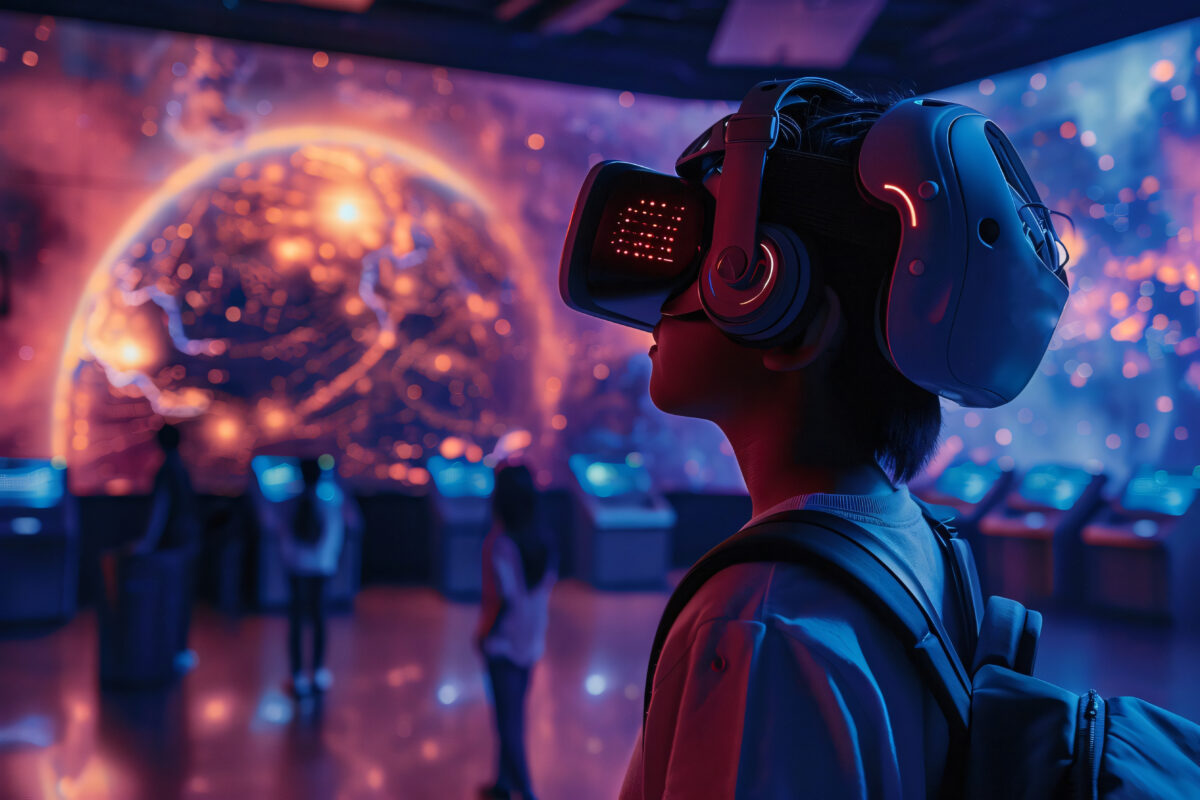The making of a virtual tour has changed the way we visit places with respect to modern technologies, and Dubai leads this growth. Now, three-dimensional exploration of the city and its famous sights and unexplored areas is possible virtually. From the high-rise structures to clean coastlines, Dubai’s virtual view provides an eye for every spectator across the globe. Such experiences aid in giving a glimpse of the splendor of the empire to those who wish to visit it. Virtual tours also help travelers and the business industry when the need to plan arises.
In this blog post, we’ll explain virtual tours, their different types, their advantages for businesses, and the creation process.
What are Virtual Tours?
Virtual tours allow users to engage in real-life places and environments by using 360-degree images and images of videos. This makes it possible for people to starve in many locations while seated to zoom out and see many things and even move around—with hundreds of screens for interaction.
Such experiences are achieved through the use of germs, videos, and noises in select instances. People are able to walk around the scene and zoom in on parts of it to some extent, and hot spots can be activated. Virtual tours are rather useful in giving an accurate impression of a destination, property, or attraction. They are on the rise in tourism, property business, education, and art spheres.
Types Of Virtual Tours
360-degree photo tours
These types of tours are based on a clear panoramic image visually stitched into one picture. The viewer is able to freely pan and zoom into present images with their time constraints, allowing them to observe carefully the minute components involved.
Video-Based Tours:
Very interactive and interesting are video tours that walk viewers through certain areas with either voiceover or music. They are however more entertaining but more passive than other such types.
3D virtual tours
This makes use of complex modeling of 3D tours to convert spaces into virtual 3D images. They move within the virtual picture, although they look from the inside out, experiencing actual depth and distance from objects.

Interactive virtual tours
These include virtual tours that use a number of hotspots that provide more content or media. Most of them usually involve the interaction of lots of media in order to enhance the learning effect.
VR-compatible tours
The most immersive of the tours is for virtual reality headsets. This lets the users be present at location one, with the tracker letting them see everything from a 360-degree view.
Live virtual tours
These are tours that are live and real-time, as they are controlled by a human being. There is less mobility with these and they are usually basic but very popular for looking at properties from overseas and even for school trips.
All virtual tour types have their own unique functions targeting different audiences within diverse sectors. The option is determined by the design.
Advantages of Virtual Tours
Accessibility and Convenience
There are many advantages of virtual tours; one of them is they can be offered and done from anywhere, anywhere, and at any time. They cut back on travel expenses as well as logistical issues and become available 24/7 to cater to the various time frames.
Educational Value
Such tours allow people to visit places that they otherwise would not have been able to visit physically. They are appropriate for teaching because they cut across different kinds of learning styles and enable better comprehension and recall of facts.
Environmental and inclusive benefits
Virtual tours help to cut down on carbon footprints by minimizing physical movement. This means that these tours guarantee access to such spaces irrespective of one’s disability.
Decision-Making Aid
When considering purchasing a house or going on a vacation, virtual tours are beneficial as they help make informed choices. People are able to see and know a lot more detail even before going there.
How To Create Virtual Tours?
The process of creating virtual tours is simple and enjoyable, as it combines both imagination and technology. During the initial stage, think of a place or an area you would like to highlight. Visuals are indispensable, and for this reason, use professional photography equipment or specialized 360-degree cameras for the surrounding environment.

Ensure that the lighting is off the charts and every picture taken reveals something special about the space. When you are through with a photo collection, stitching of the photos can be done on virtual tour software such as Matterport, Kuula, or 3DVista.
These platforms usually come with help and dropout tools to enhance the user experience with hot spots, tags, and navigation. An audio track and/or music can make the tour even more engaging.
Finally, you can host the virtual tour on your website, social networking sites, or publish it through a specific application, enabling your audience to interactively visit the place being presented to them from the confines of their homes.
Conclusion
To sum up, the possibility of virtual tours has changed the way people go around various buildings and interesting sights in Dubai, as anyone can see them no matter where they are located. Regardless of whether you are about to pay a visit, looking for a property, or just interested in the architecture of the area, virtual tours do offer a wide range of benefits. If you wish to design a beautiful virtual tour in Dubai, Limina Studios is a great solution and will bring your business to the screen of your potential clients.























